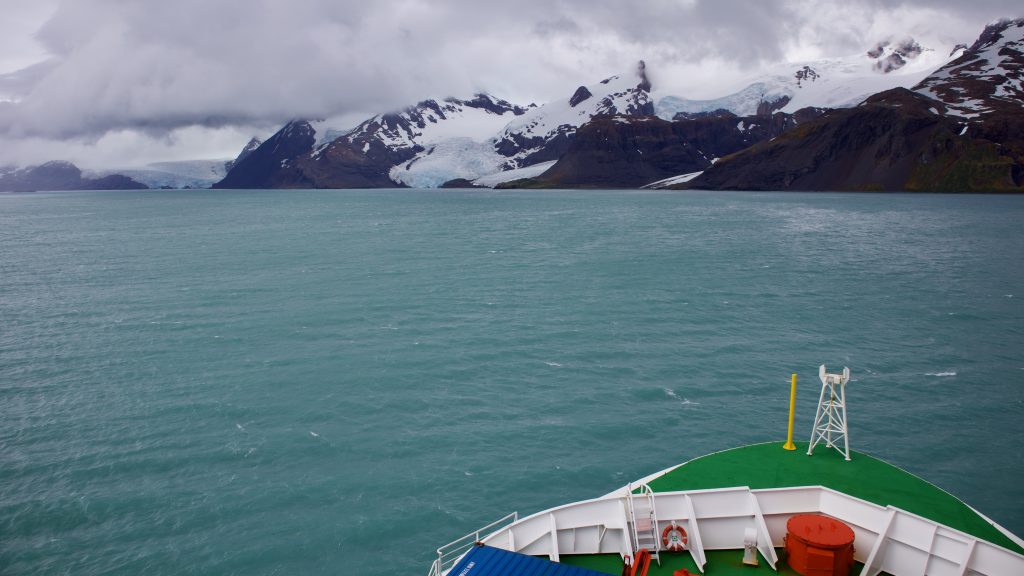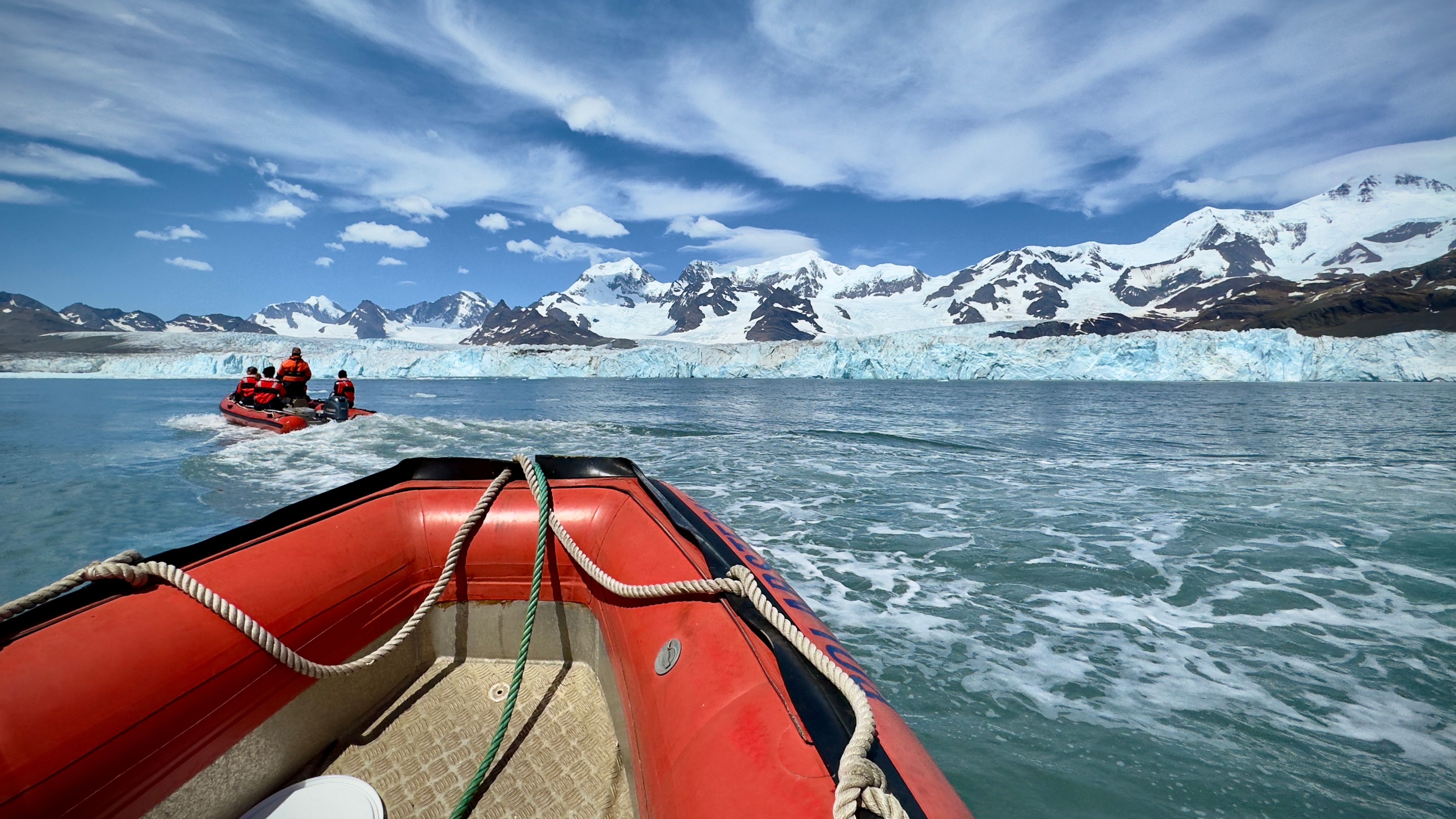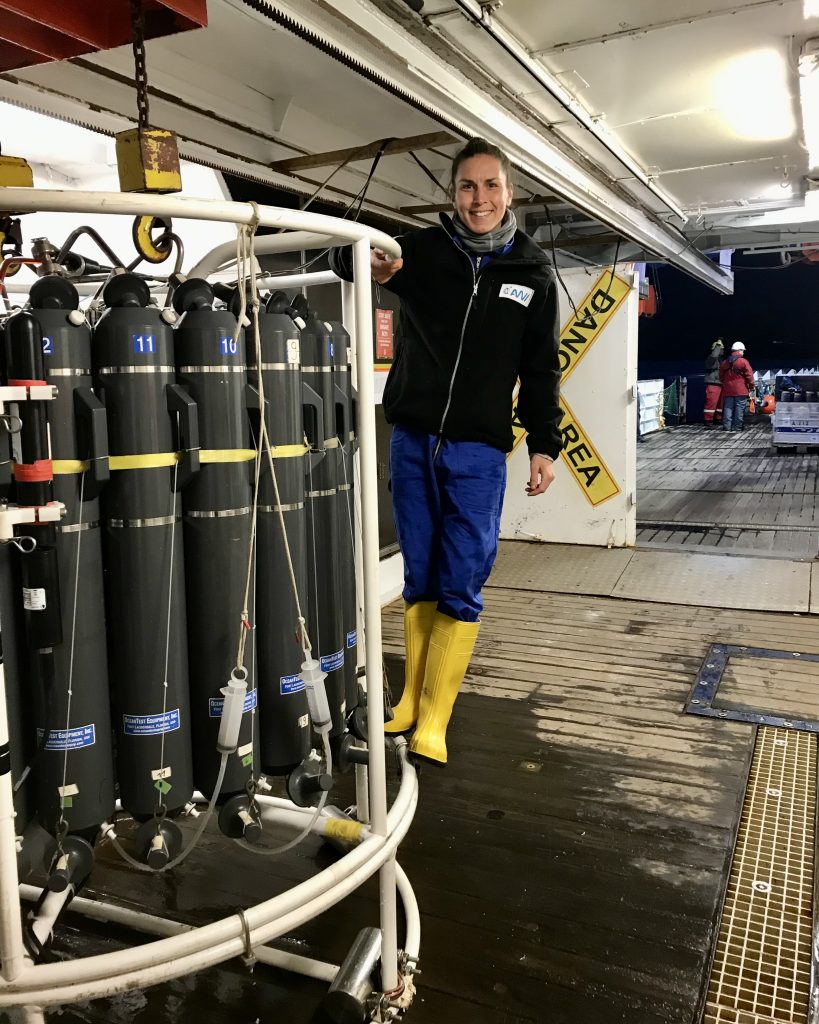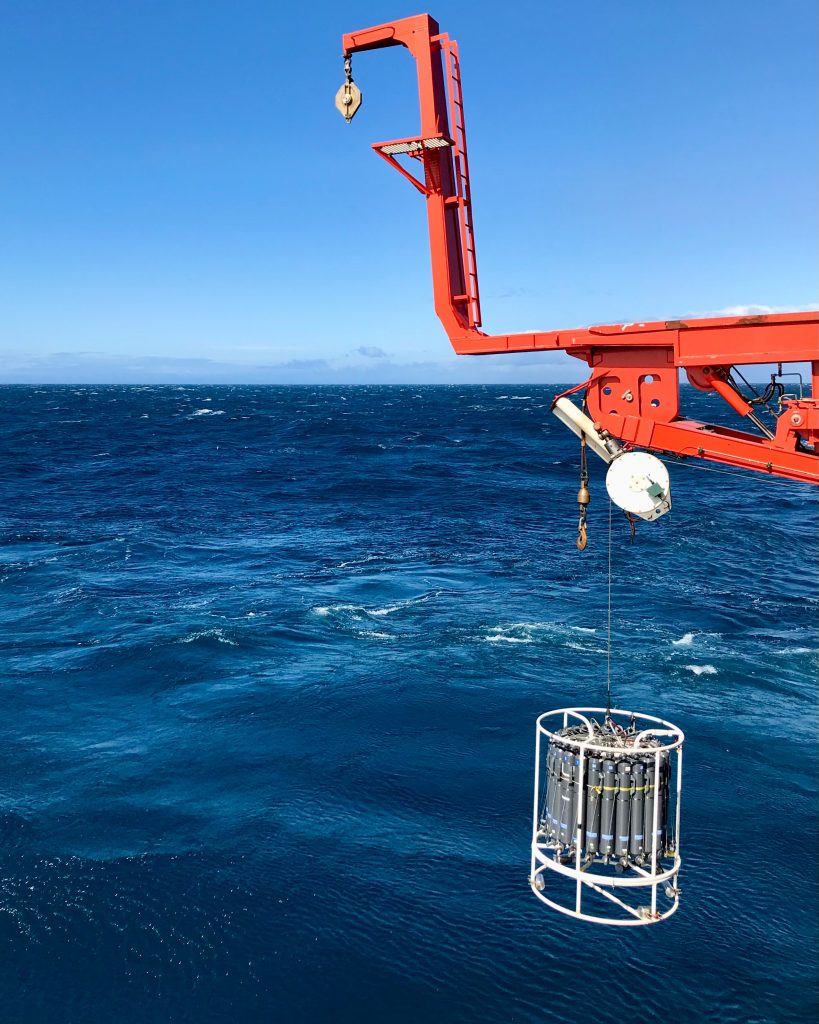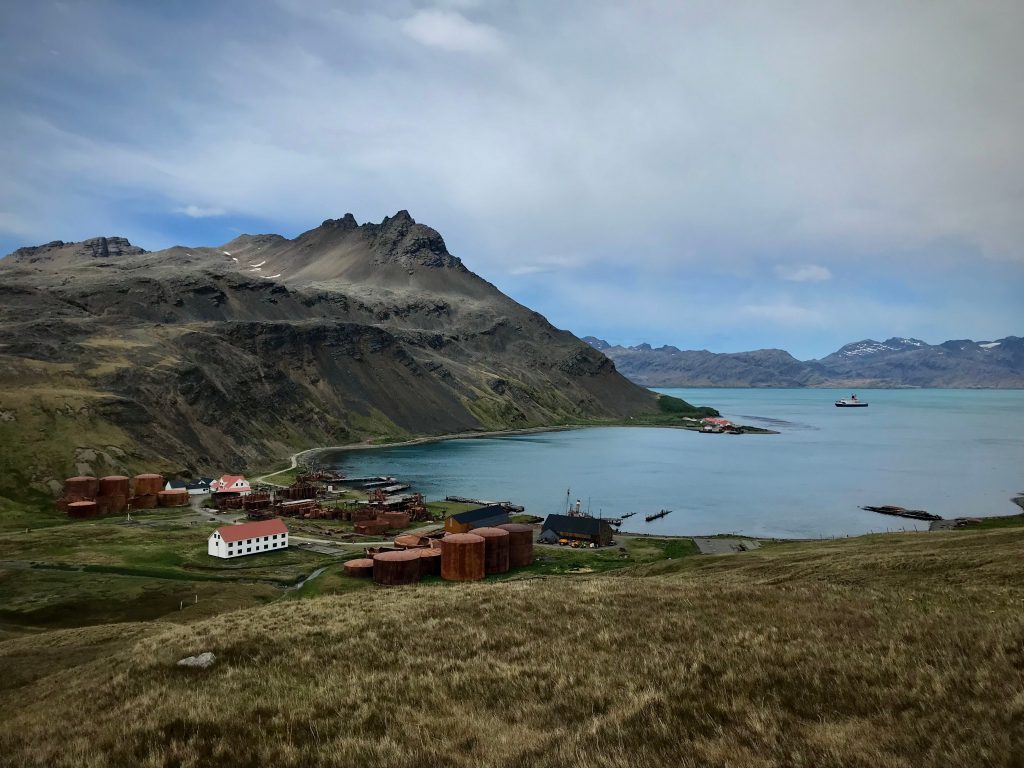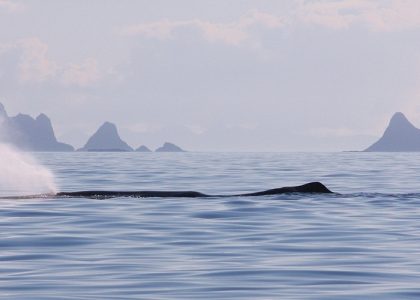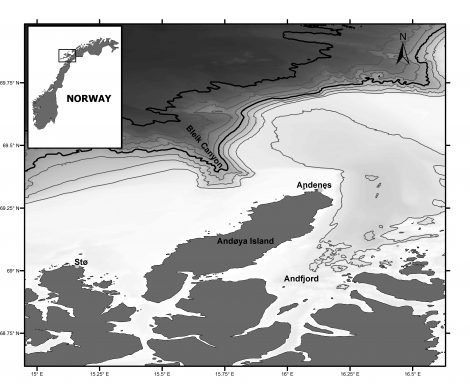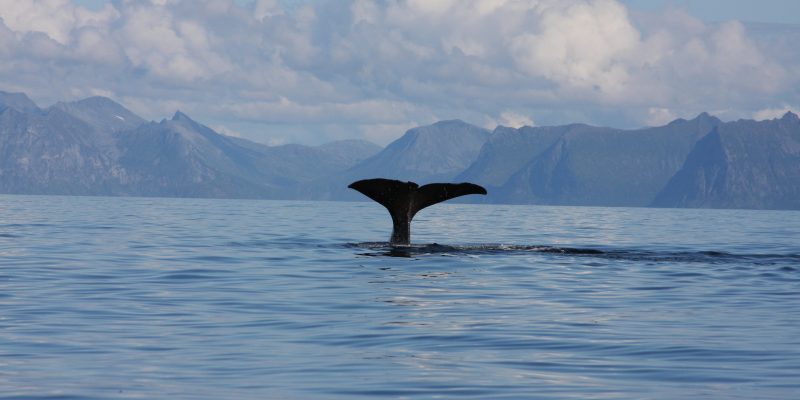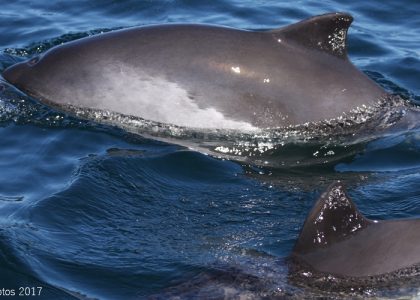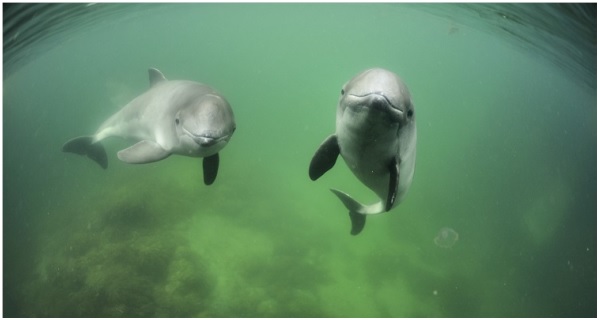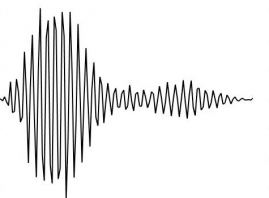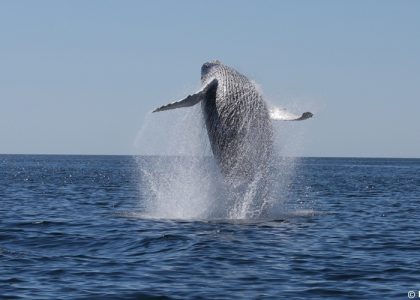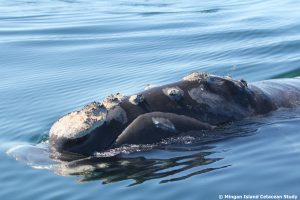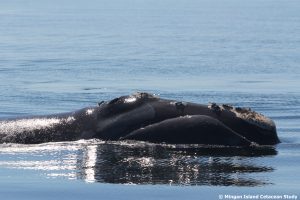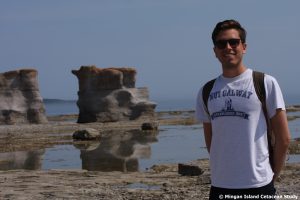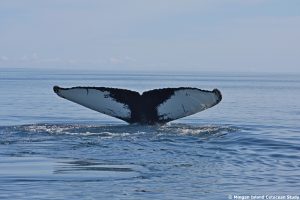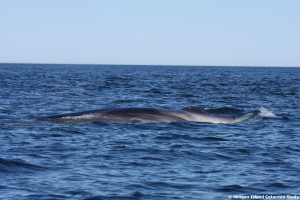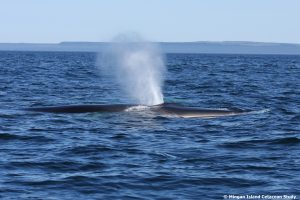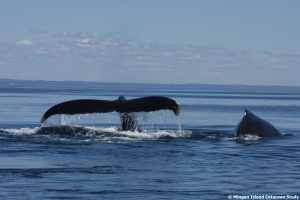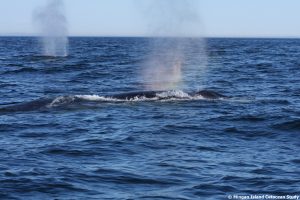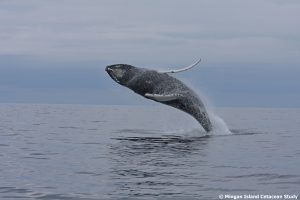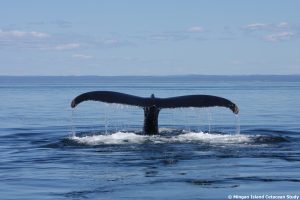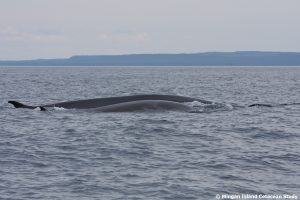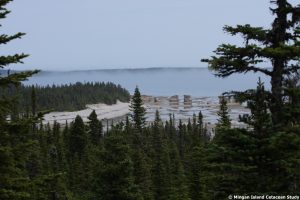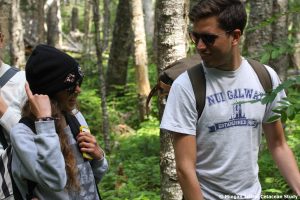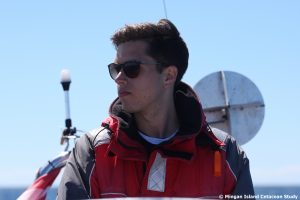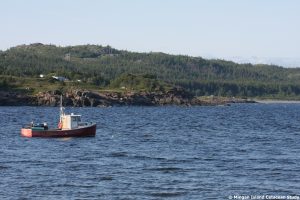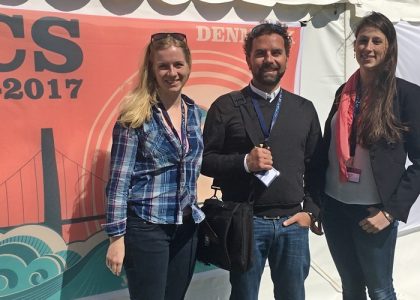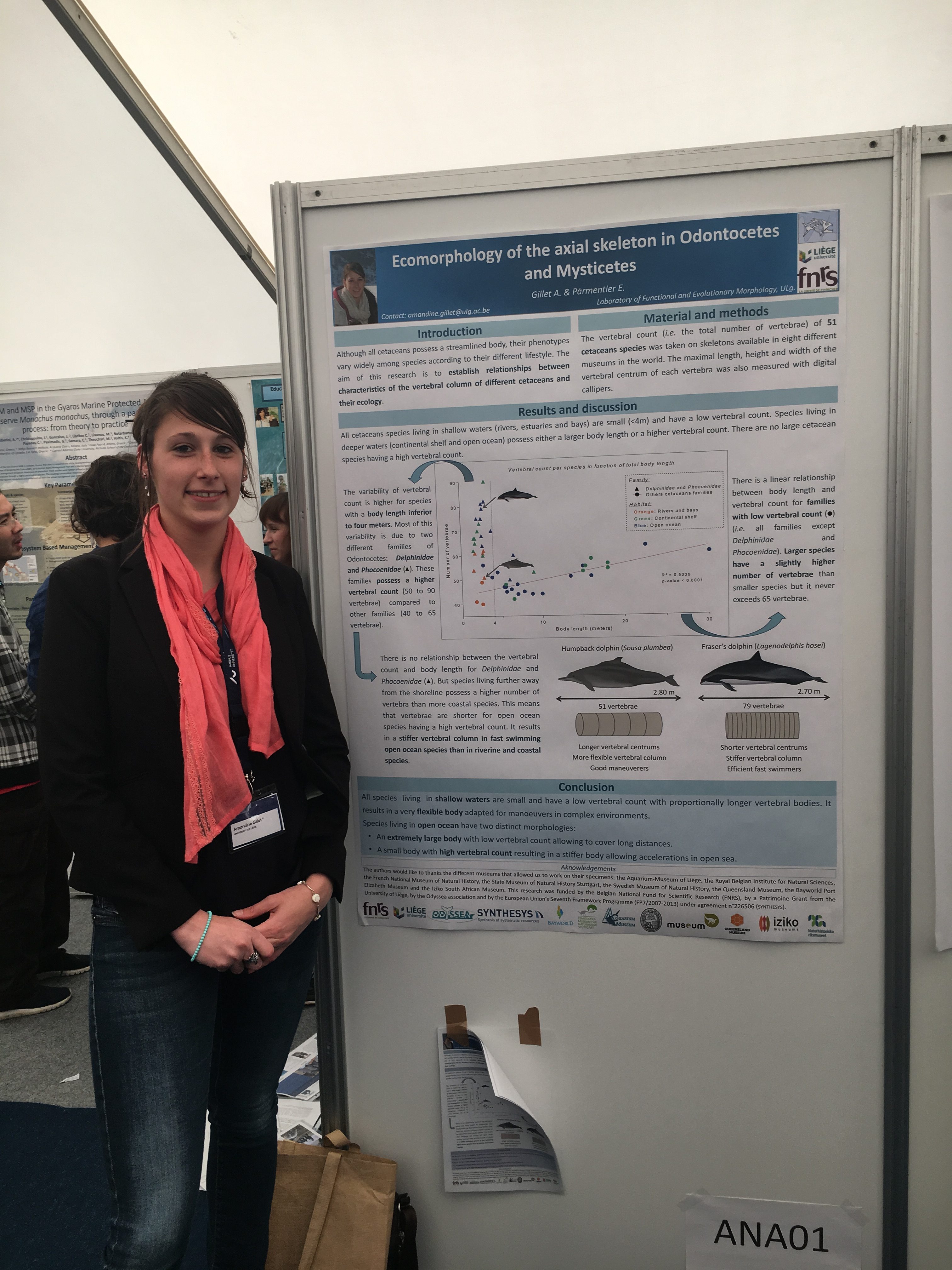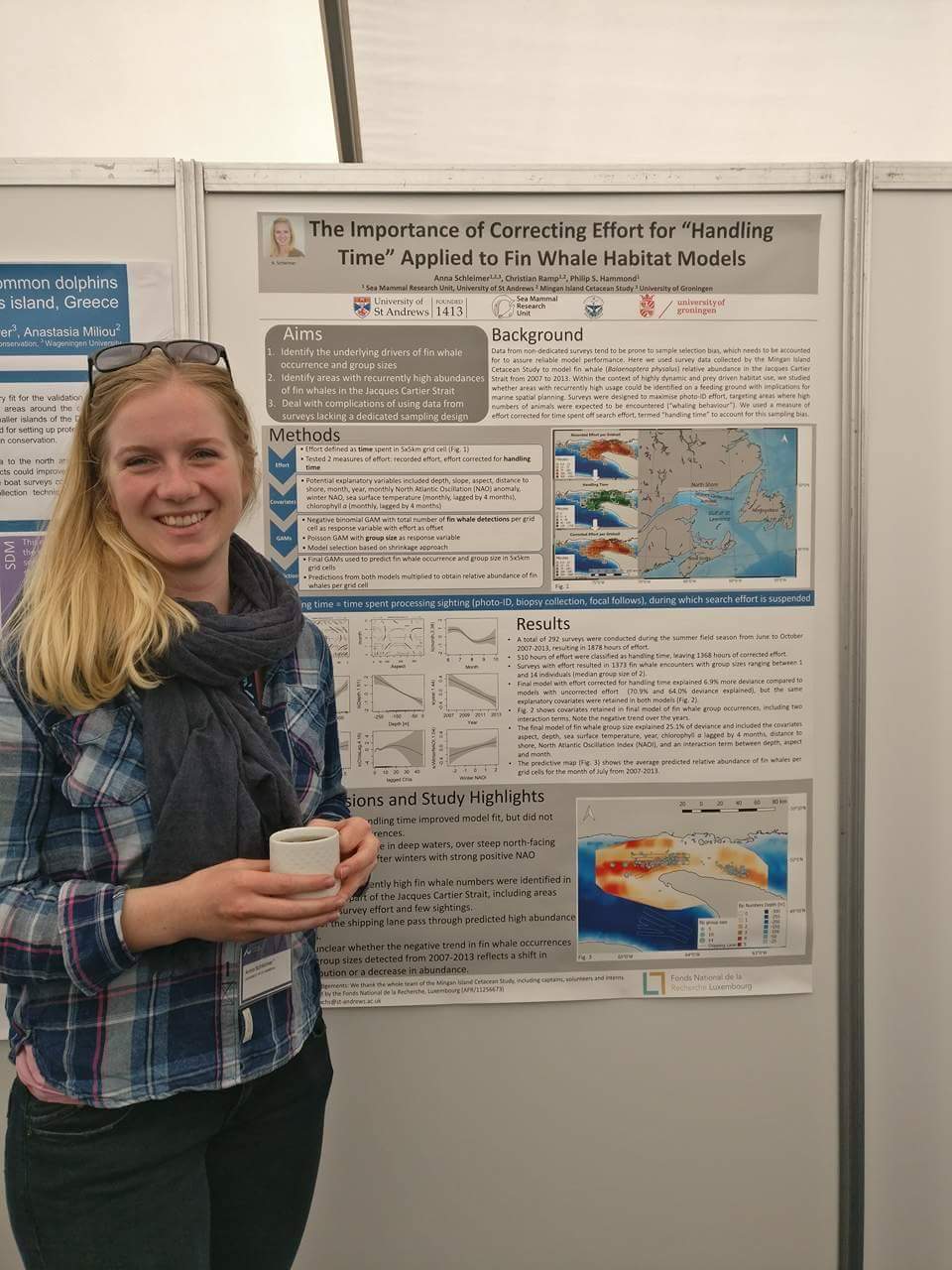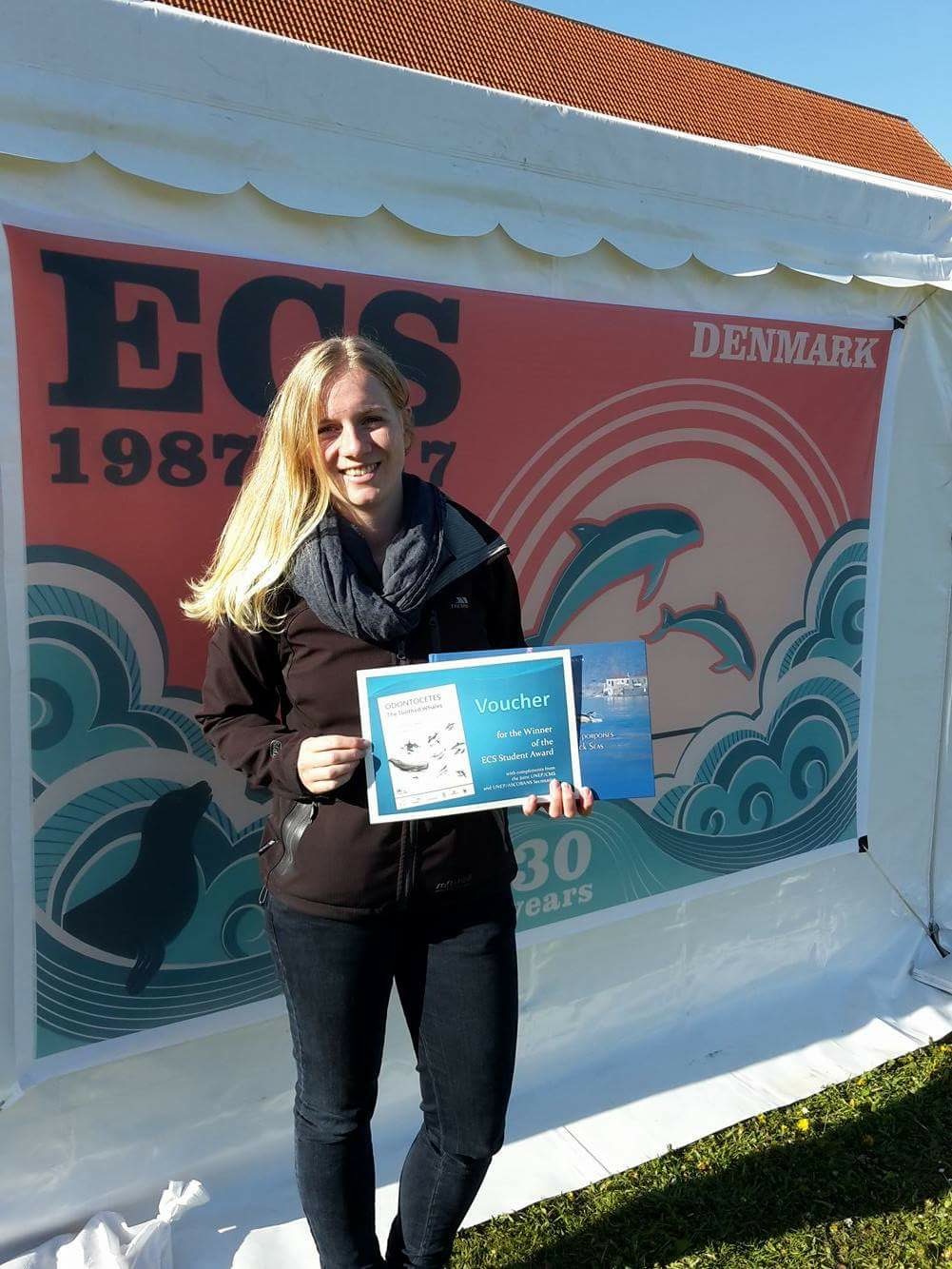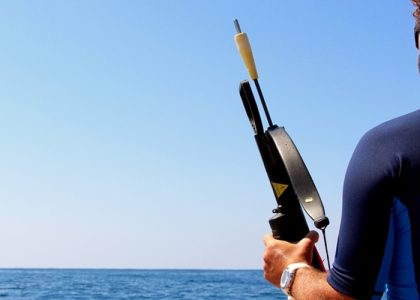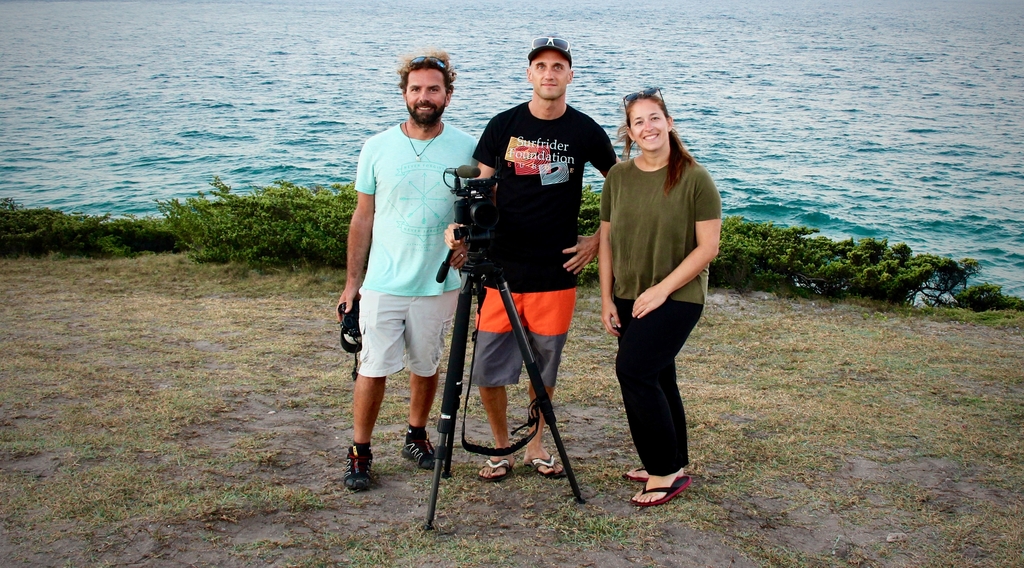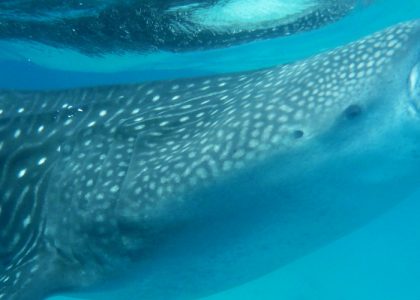Harbour porpoises (Phocoena phocoena)
The harbour porpoise is one of the six extant porpoise species in the world. It is dark grey (lighter on the belly) and has a small, rounded head with no noticeable beak. The dorsal fin is small and triangular. They are quite small, and although there are variations between populations, they reach a maximum of 189 cm in length and 72 kg in weight, females being larger and heavier than males. Harbour porpoises in Norway and Sweden are smaller than in the rest of the North Atlantic, reaching a maximum of 153 cm, while in Scottish waters, they reach a maximum of 173 cm in length and 50 kg in weight.
There is high variation in the maximum longevity for harbour porpoises in the North Atlantic. In Canada, they do not live longer than 10 years, while in the UK they can reach up to 24 years of age, living a mean of about 12 years. Males reach sexual maturity at 6 years, while females at 3.5 years of age, and become pregnant every 2.5 and 3 years, which is more often than other cetacean species, such as killer whales that give birth every 5 years or more. Gestation lasts between 10 and 11 months, and the baby porpoise is less than 80 cm and 7 kg at birth, which takes place between May and August.
The harbour porpoise occurs exclusively in the northern hemisphere, in coastal and offshore waters in the Atlantic and Pacific oceans. Depth and slope are the most important variables determining harbour porpoise distribution, which are related to the distribution of their prey, such as sandeels that dwell at the sea floor Harbour porpoises are mostly found in waters between 50 and 200m deep. Other factors affecting harbour porpoise distribution are salinity, tidal state, and distance from land. Porpoises move within the same geographic area, and although individual movements vary greatly, as some porpoises travel dozens of km a day moving to far areas, while others stay in the same area for weeks, no coordinated migrations have been identified.
The harbour porpoise is one of the six extant porpoise species in the world.
As a species, their main predator is the killer whale, and it has been suggested that harbour porpoises produce high frequency vocalisations to them, as these frequencies are way above killer whale hearing. In UK waters, the killer whale population is very small and therefore likely of little concern for harbour porpoises. In recent years, a new, unexpected predator has been reported for the North Sea and adjacent waters: the grey seal (Halichoerus grypus). Observations of grey seals feeding on harbour porpoises have been made in many European countries, including Belgium, France, the Netherlands, and the UK. These observations include reports of scavenging as well as active predation!
Listed under ‘Least Concern’ on the IUCN Red List of Endangered Species, the harbour porpoise faces nonetheless considerable threats due to anthropogenic activities, especially in certain regions. The main threat is being caught in fishing nets, which is driving the Baltic Sea population to extinction. Other threats include anthropogenic noise, pollution, and marine debris. Additionally, these little critters are being killed by bottlenose dolphins in coastal waters off California, in the US, and off Scotland, in the UK. The reasons for these non-predatory deadly interactions remain unknown for the scientific community, although several hypotheses have been postulated.
The main threat to harbour porpoises is incidental catches in fishing gear.
Harbour porpoises are protected by international legislation throughout their distribution range. In Europe, for example, the parties of the Agreement on the Conservation of Small Cetaceans in the Baltic, North East Atlantic, Irish and North Seas (ASCOBANS) are obliged to develop and adopt measures to protect harbour porpoises, as well as to acquire knowledge about their occurrence, abundance, and distribution. Additionally, the harbour porpoise is listed in the Annex II of the Habitats Directive (Council Directive, 1992) and member states are required to set up Special Areas for Conservation (SACs) for listed species.
Studying harbour porpoises, however, is not easy. They are especially difficult to observe at sea, even at short distances and in good weather conditions. They are quite small, approximately 1.5 m long, and surface only a few seconds at a time, typically travelling in groups of 3 or fewer animals, or alone. However, they are highly vocal, producing entirely stereotyped narrow-band high-frequency (NBHF) echolocation clicks. Because of this, Passive acoustic monitoring (PAM) systems are increasingly used alongside visual methods as well as independently to study cetaceans that are difficult to detect visually, such as the harbour porpoises. PAM systems have several advantages over visual surveys as they can be used during bad weather conditions (e.g., high waves, fog) and at night.
Their vocal activity can be used to detect them acoustically, even when visual detection is not possible.


